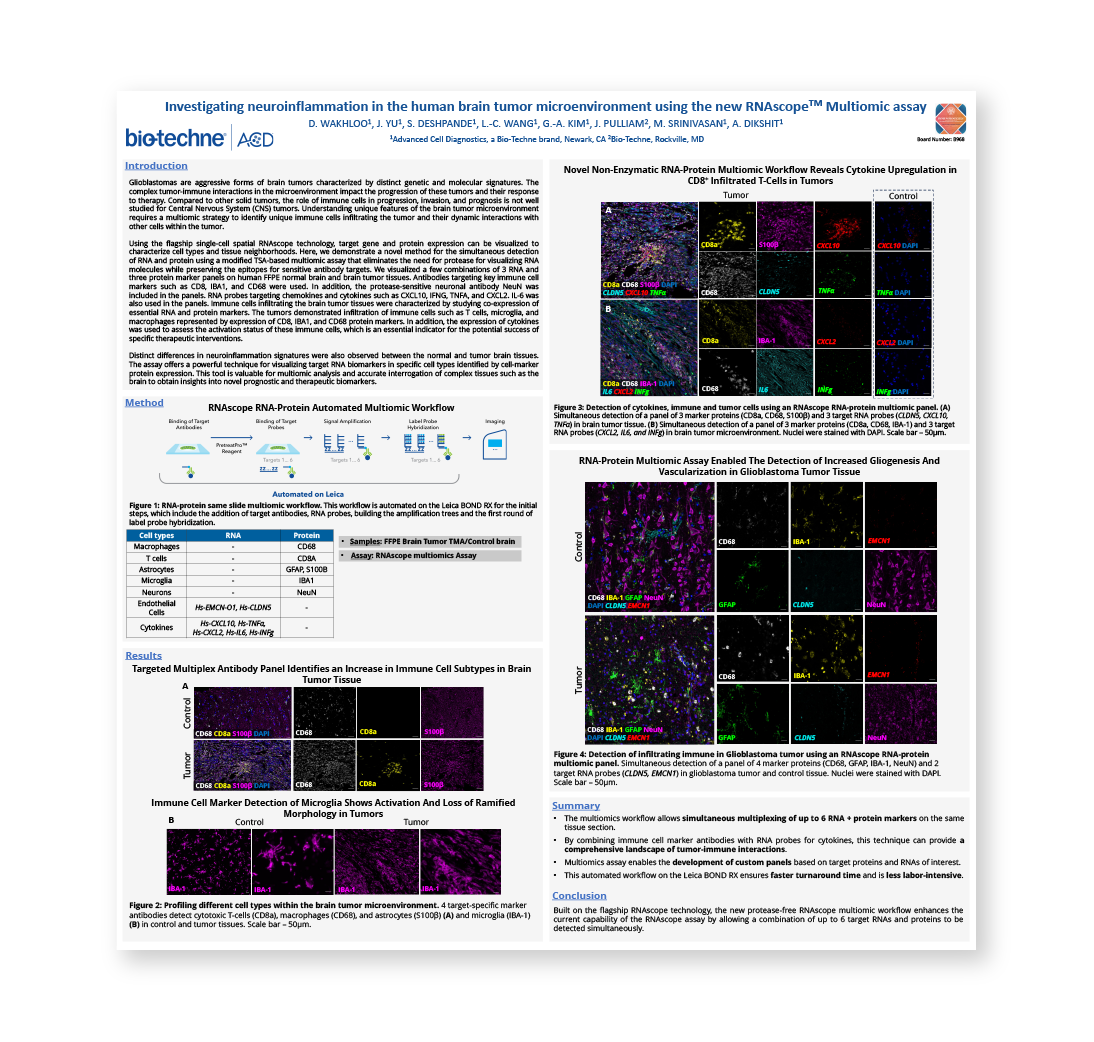Poster Presentation: Investigating Neuroinflammation in the Human Brain Tumor Microenvironment Using the New RNAscope™ Multiomic Assay
Scientific Meeting PostersGlioblastomas are aggressive forms of brain tumors characterized by distinct genetic and molecular signatures. The complex tumor-immune interactions in the microenvironment impact the progression of these tumors and their response to therapy. Compared to other solid tumors, the role of immune cells in progression, invasion, and prognosis is not well studied for Central Nervous System (CNS) tumors. Understanding unique features of the brain tumor microenvironment requires a multiomic strategy to identify unique immune cells infiltrating the tumor and their dynamic interactions with other cells within the tumor.
Using the flagship single-cell spatial RNAscope technology, target gene and protein expression can be visualized to characterize cell types and tissue neighborhoods. Here, we demonstrate a novel method for the simultaneous detection of RNA and protein using a modified TSA-based multiomic assay that eliminates the need for protease for visualizing RNA molecules while preserving the epitopes for sensitive antibody targets. We visualized a few combinations of 3 RNA and three protein marker panels on human FFPE normal brain and brain tumor tissues. Antibodies targeting key immune cell markers such as CD8, IBA1, and CD68 were used. In addition, the protease-sensitive neuronal antibody NeuN was included in the panels. RNA probes targeting chemokines and cytokines such as CXCL10, IFNG, TNFA, and CXCL2. IL-6 was also used in the panels. Immune cells infiltrating the brain tumor tissues were characterized by studying co-expression of essential RNA and protein markers. The tumors demonstrated infiltration of immune cells such as T cells, microglia, and macrophages represented by expression of CD8, IBA1, and CD68 protein markers. In addition, the expression of cytokines was used to assess the activation status of these immune cells, which is an essential indicator for the potential success of specific therapeutic interventions.
Distinct differences in neuroinflammation signatures were also observed between the normal and tumor brain tissues. The assay offers a powerful technique for visualizing target RNA biomarkers in specific cell types identified by cell-marker protein expression. This tool is valuable for multiomic analysis and accurate interrogation of complex tissues such as the brain to obtain insights into novel prognostic and therapeutic biomarkers.
